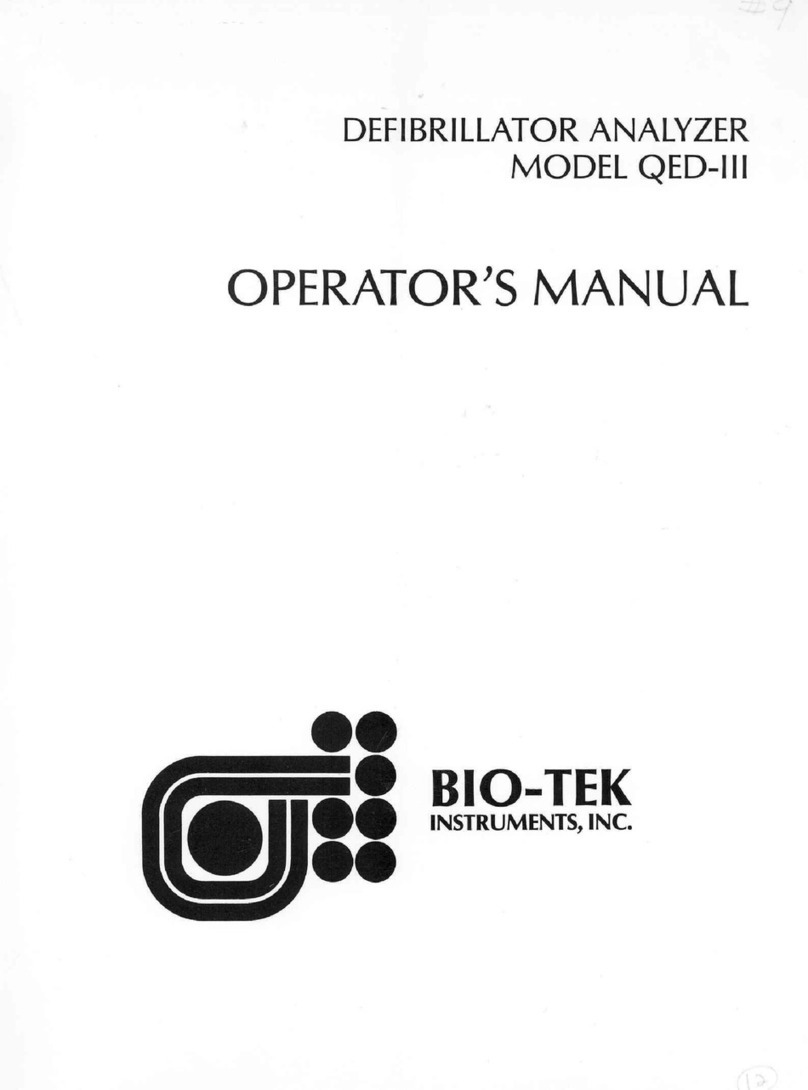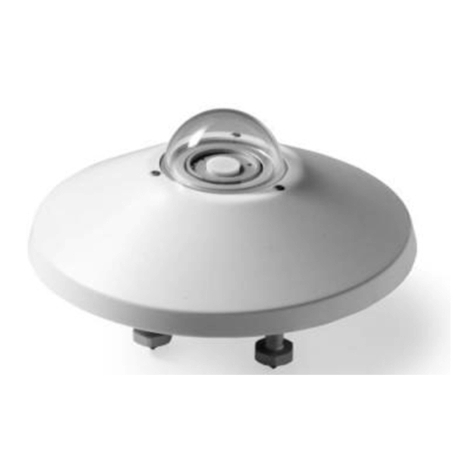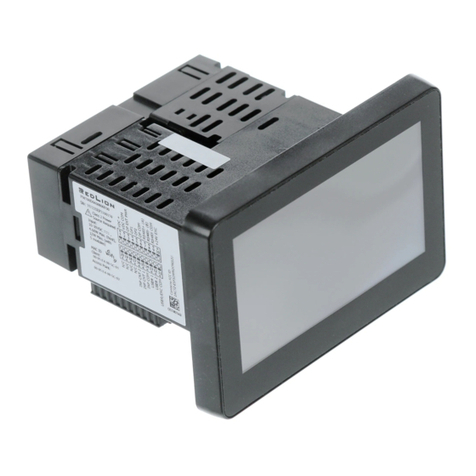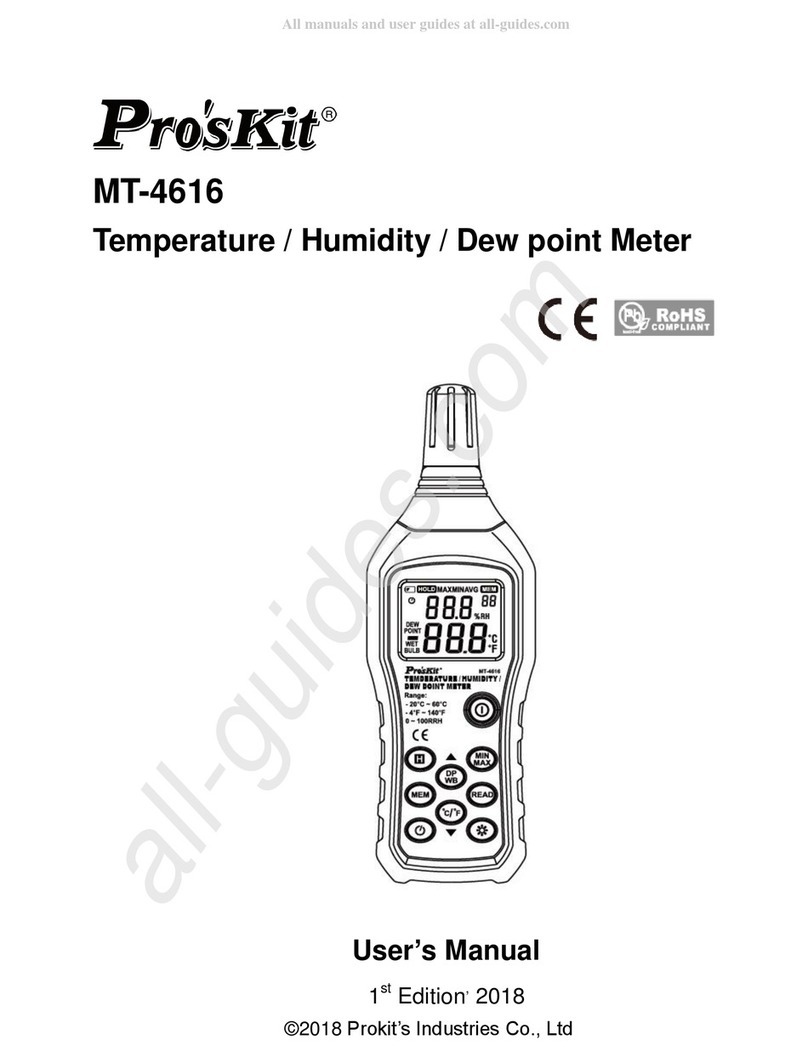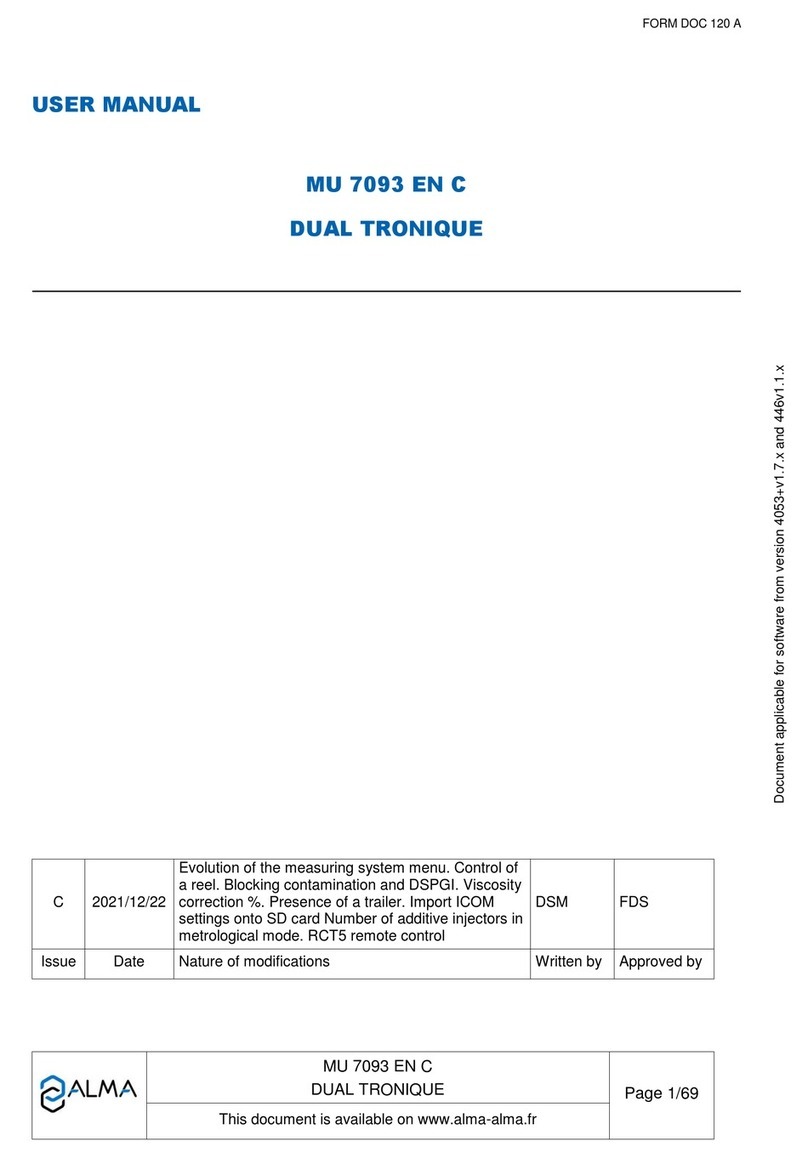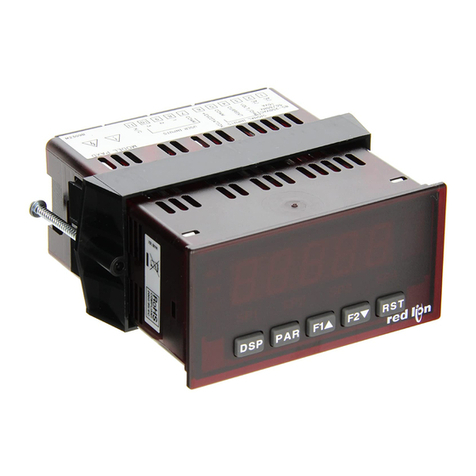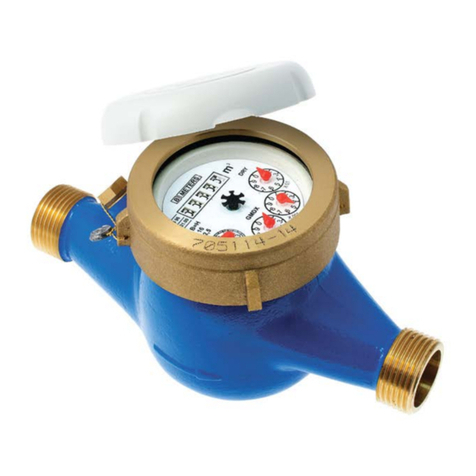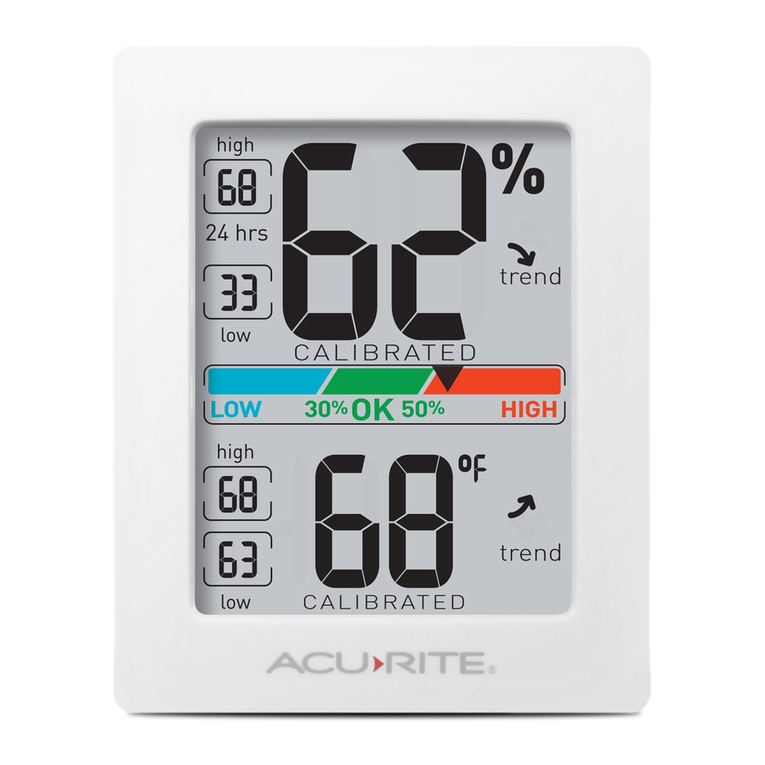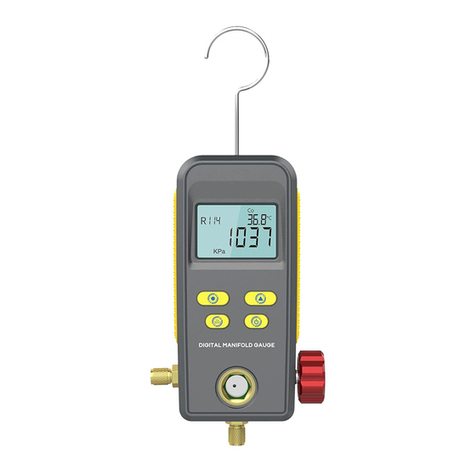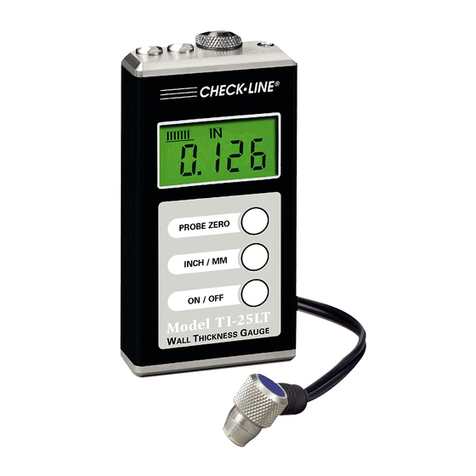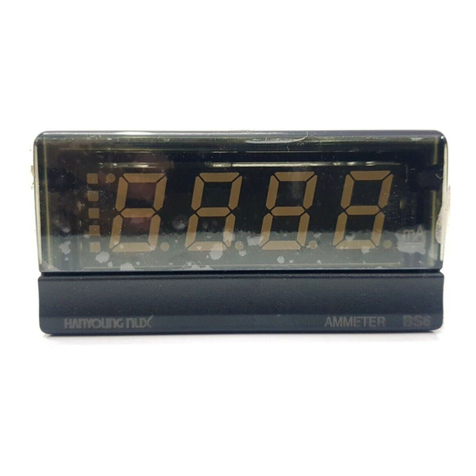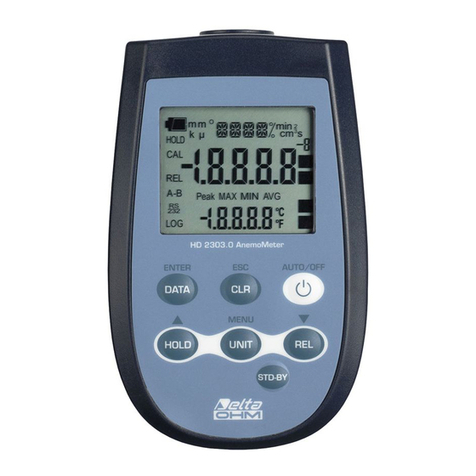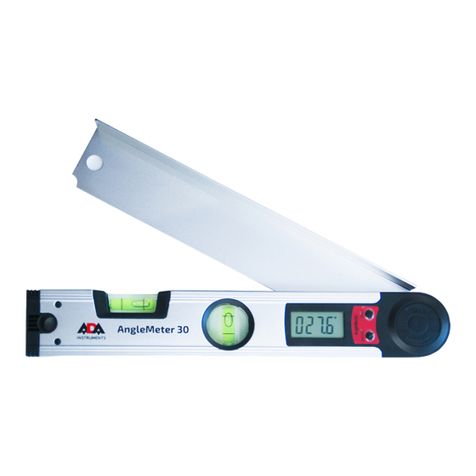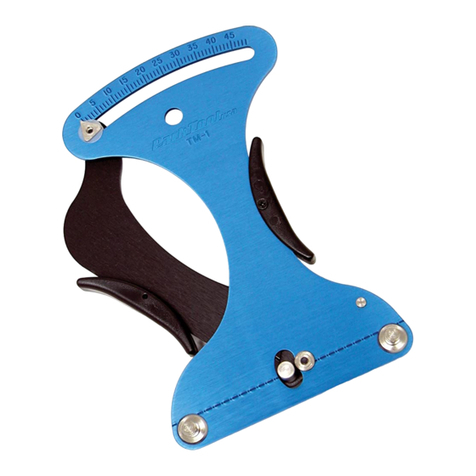INSTRUMART FS-200 User manual

OPERATION MANUAL
FS-200 ULTRASONIC THICKNESS GAUGE
P/N P-105-0007 Rev 1.90
,
March 2014

Copyright 2014 INSTRUMART. All rights reserved.
No part of this publication may be reproduced, translated into another
language, stored in a retrieval system, or transmitted in any form or by any
means; electronic, mechanical, photocopying, recording, or otherwise,
without the prior written consent of INSTRUMART.
Every precaution has been taken in the preparation of this publication.
INSTRUMART assumes no responsibility for errors or omissions. Neither
is any liability assumed for damages resulting from the use of information
contained herein.
Any brand or product names mentioned herein are used for identification
purposes only, and are trademarks or registered trademarks of their
respective holders.
INSTRUMART
35 Green Mountain Drive
South Burlington, VT 05403
Tel (802) 863-0085
Fax (802) 863-1193
www.instrumart.com

FS-200 Ultrasonic Thickness Gauge
CONTENTS
INTRODUCTION
OPERATION
THE KEYPAD
THE DISPLAY
THE TRANSDUCER
MAKING MEASUREMENTS
CONDITION AND PREPARATION OF SURFACES
PROBE ZERO
CALIBRATION
SCAN MODE
TRANSDUCER SELECTION
APPENDIX A: PRODUCT SPECIFICATIONS
APPENDIX B: APPLICATION NOTES
APPENDIX C: SOUND VELOCITIES OF COMMON MATERIALS
WARRANTY INFORMATION
1
3
3
6
8
9
11
12
13
17
18
21
23
27
29
DISCLAIMER
Inherent in ultrasonic thickness measurement is the possibility that the
instrument will use the second rather than the first echo from the back
surface of the material being measured. This may result in a thickness
reading that is TWICE what it should be. Responsibility for proper use of
the instrument and recognition of this phenomenon rests solely with the
user of the instrument.

INSTRUMART
blank page

FS-200 Ultrasonic Thickness Gauge
1
INTRODUCTION
The INSTRUMART model FS-200 is a precision Ultrasonic Micrometer.
Based on the same operating principles as SONAR, the FS-200 is capable
of measuring the thickness of various materials with accuracy as high as
0.001 inches, or 0.01 millimeters. The principle advantage of ultrasonic
measurement over traditional methods is that ultrasonic measurements can
be performed with access to only one side of the material being measured.
This manual is presented in three sections. The first section covers
operation of the FS-200, and explains the keypad controls and display.
The second section provides guidelines in selecting a transducer for a
specific application. The last section provides application notes and a table
of sound velocity values for various materials.
INSTRUMART maintains a customer support resource in order to assist
users with questions or difficulties not covered in this manual. Customer
support may be reached at any of the following:
INSTRUMART
35 Green Mountain Drive
South Burlington, VT 05403
Tel (802) 863-0085
Fax (802) 863-1193
www.instrumart.com

INSTRUMART
2
blank page

FS-200 Ultrasonic Thickness Gauge
3
OPERATION
The FS-200 interacts with the operator through the membrane keypad
and the LCD display. The functions of the various keys on the keypad are
detailed below, followed by an explanation of the display and its various
symbols.
The Keypad
This key is used to turn the FS-200 on and off. When the gauge is
turned ON, it will first perform a brief display test by illuminating all of the
segments in the display. After one second, the gauge will display the
internal software version number. After displaying the version number, the
display will show "0.000" (or "0.00" if using metric units), indicating the
gauge is ready for use.
The FS-200 is turned OFF by pressing the ON/OFF key. The gauge
has a special memory that retains all of its settings even when the power is
off. The gauge also features an auto-powerdown mode designed to
conserve battery life. If the gauge is idle for 5 minutes, it will turn itself off.

INSTRUMART
4
The PRB-0 key is used to "zero" the FS-200 in much the same way that
a mechanical micrometer is zeroed. If the gauge is not zeroed correctly, all
of the measurements that the gauge makes may be in error by some fixed
value. Refer to page 12 for an explanation of this important procedure.
The CAL key is used to enter and exit the FS-200's calibration mode.
This mode is used to adjust the sound-velocity value that the FS-200 will
use when calculating thickness. The gauge will either calculate the sound-
velocity from a sample of the material being measured, or allow a known
velocity value to be entered directly. Refer to page 13 for an explanation of
the two CAL functions available.
The IN/MM key is used to switch back and forth between English and
metric units. This key may be used at any time, whether the gauge is
displaying a thickness (IN or MM) or a velocity value (IN/sor M/s).

FS-200 Ultrasonic Thickness Gauge
5
The UP arrow key has two functions. When the FS-200 is in calibration
mode, this key is used to increase numeric values on the display. An auto-
repeat function is built in, so that when the key is held down, numeric
values will increment at an increasing rate. When the FS-200 is not in
calibration mode, the UP arrow key switches the SCAN measurement
mode on and off. Refer to page 17 for an explanation of the SCAN
measurement mode.
The DOWN arrow key has two functions. When the FS-200 is in the
CAL mode, this key is used to decrease numeric values on the display. An
auto-repeat function is built in, so that when the key is held down, numeric
values will decrement at an increasing rate. When the FS-200 is not in
calibration mode, the DOWN arrow key switches the display backlight
between three available settings. OFF will be displayed when the backlight
is switched off. AUTO will be displayed when the backlight is set to
automatic mode, and ON will be displayed when the backlight is set to stay
on. In the AUTO setting, the backlight will illuminate when the FS-200 is
actually making a measurement.

INSTRUMART
6
The Display
The numeric portion of the display consists of 4 complete digits
preceded by a leading "1", and is used to display numeric values, as well
as occasional simple words, to indicate the status of various settings.
When the FS-200 is displaying thickness measurements, the display will
hold the last value measured, until a new measurement is made.
Additionally, when the battery voltage is low, the entire display will
begin to flash. When this occurs, the batteries should be replaced.
These eight vertical bars form the Stability Indicator. When the FS-200
is idle, only the left-most bar and the underline will be on. When the gauge
is making a measurement, six or seven of the bars should be on. If fewer
than five bars are on, the FS-200 is having difficulty achieving a stable
measurement, and the thickness value displayed will most likely be
erroneous.

FS-200 Ultrasonic Thickness Gauge
7
When the IN symbol is on, the FS-200 is displaying a thickness value in
inches. The maximum thickness that can be displayed is 19.999 inches.
When the MM symbol is on, the FS-200 is displaying a thickness value
in millimeters. If the displayed thickness exceeds 199.99 millimeters, the
decimal point will shift automatically to the right, allowing values up to
1999.9 millimeters to be displayed.
When the IN symbol is on, in conjunction with the /ssymbol, the FS-
200 is displaying a sound-velocity value in inches-per-microsecond.
When the Msymbol is on, in conjunction with the /s symbol, the FS-
200 is displaying a sound-velocity value in meters-per-second.

INSTRUMART
8
The Transducer
The transducer is the "business end" of the FS-200. It transmits and
receives the ultrasonic sound waves which the FS-200 uses to calculate
the thickness of the material being measured. The transducer connects to
the FS-200 via the attached cable, and two coaxial connectors. When
using transducers manufactured by INSTRUMART, the orientation of the
dual coaxial connectors is not critical: either plug may be fitted to either
socket in the FS-200.
The transducer must be used correctly in order for the FS-200 to
produce accurate, reliable measurements. Below is a short description of
the transducer, followed by instructions for its use.
This is a bottom view of a typical transducer. The two semicircles of the
wearface are visible, as is the barrier separating them. One of the
semicircles is responsible for conducting ultrasonic sound into the material
being measured, and the other semicircle is responsible for conducting the
echoed sound back into the transducer. When the transducer is placed
against the material being measured, it is the area directly beneath the
center of the wearface that is being measured.

FS-200 Ultrasonic Thickness Gauge
9
This is a top view of a typical transducer. Press against the top with the
thumb or index finger to hold the transducer in place. Moderate pressure is
sufficient, as it is only necessary to keep the transducer stationary, and the
wearface seated flat against the surface of the material being measured.
Making Measurements
In order for the transducer to do its job, there must be no air gaps
between the wear-face and the surface of the material being measured.
This is accomplished with the use of a "coupling" fluid, commonly called
"couplant". This fluid serves to "couple", or transmit, the ultrasonic sound
waves from the transducer, into the material, and back again. Before
attempting to make a measurement, a small amount of couplant should be
applied to the surface of the material being measured. Typically, a single
droplet of couplant is sufficient.
After applying couplant, press the transducer (wearface down) firmly
against the area to be measured. The Stability Indicator should have six or
seven bars darkened, and a number should appear in the display. If the
FS-200 has been properly "zeroed" (see page 12) and set to the correct
sound velocity (see page 13), the number in the display will indicate the
actual thickness of the material directly beneath the transducer.

INSTRUMART
10
If the Stability Indicator has fewer than five bars darkened, or the
numbers on the display seem erratic, first check to make sure that there is
an adequate film of couplant beneath the transducer, and that the
transducer is seated flat against the material. If the condition persists, it
may be necessary to select a different transducer (size or frequency) for
the material being measured. See page 18 for information on transducer
selection.
While the transducer is in contact with the material being measured, the
FS-200 will perform four measurements every second, updating its display
as it does so. When the transducer is removed from the surface, the
display will hold the last measurement made.
IMPORTANT
Occasionally, a small film of couplant will be drawn out between the
transducer and the surface as the transducer is removed. When this
happens, the FS-200 may perform a measurement through this couplant
film, resulting in a measurement that is larger or smaller than it should be.
This phenomenon is obvious when one thickness value is observed while
the transducer is in place, and another value is observed after the
transducer is removed.

FS-200 Ultrasonic Thickness Gauge
11
Condition and Preparation of Surfaces
In any ultrasonic measurement scenario, the shape and roughness of
the test surface are of paramount importance. Rough, uneven surfaces
may limit the penetration of ultrasound through the material, and result in
unstable, and therefore unreliable, measurements. The surface being
measured should be clean, and free of any small particulate matter, rust, or
scale. The presence of such obstructions will prevent the transducer from
seating properly against the surface. Often, a wire brush or scraper will be
helpful in cleaning surfaces. In more extreme cases, rotary sanders or
grinding wheels may be used, though care must be taken to prevent
surface gouging, which will inhibit proper transducer coupling.
Extremely rough surfaces, such as the pebble-like finish of some cast
irons, will prove most difficult to measure. These kinds of surfaces act on
the sound beam like frosted glass on light, the beam becomes diffused and
scattered in all directions.
In addition to posing obstacles to measurement, rough surfaces
contribute to excessive wear of the transducer, particularly in situations
where the transducer is "scrubbed" along the surface. Transducers should
be inspected on a regular basis, for signs of uneven wear of the wearface.
If the wearface is worn on one side more than another, the sound beam
penetrating the test material may no longer be perpendicular to the material
surface. In this case, it will be difficult to exactly locate tiny irregularities in
the material being measured, as the focus of the soundbeam no longer lies
directly beneath the transducer.

INSTRUMART
12
Probe Zero
Setting the Zero Point of the FS-200 is important for the same reason
that setting the zero on a mechanical micrometer is important. If the gauge
is not "zeroed" correctly, all of the measurements the gauge makes will be
in error by some fixed number. When the FS-200 is "zeroed", this fixed
error value is measured and automatically corrected for in all subsequent
measurements. The FS-200 may be "zeroed" by performing the following
procedure:
Performing a Probe-Zero
1) Make sure the FS-200 is on.
2) Plug the transducer into the FS-200. Make sure that the
connectors are fully engaged. Check that the wearface of the
transducer is clean and free of any debris.
3) On the top of the FS-200, above the display, is the metal probe-
disc. Apply a single droplet of ultrasonic couplant to the face of this
disc.
4) Press the transducer against the probe-disc, making sure that the
transducer sits flat against the surface of the probe-disc. The
display should show some thickness value, and the Stability
Indicator should have nearly all its bars illuminated.
5) While the transducer is firmly coupled to the probe-disc, press the
PRB-0 key on the keypad. The FS-200 will display "Prb0" while it
is calculating its zero point.
6) Remove the transducer from the probe-disc.

FS-200 Ultrasonic Thickness Gauge
13
At this point, the FS-200 has successfully calculated it's internal error
factor, and will compensate for this value in any subsequent
measurements. When performing a "probe-zero", the FS-200 will always
use the sound-velocity value of the built-in probe-disc, even if some other
velocity value has been entered for making actual measurements. Though
the FS-200 will remember the last "probe-zero" performed, it is generally a
good idea to perform a "probe-zero" whenever the gauge is turned on, as
well as any time a different transducer is used. This will ensure that the
instrument is always correctly zeroed.
Calibration
In order for the FS-200 to make accurate measurements, it must be set
to the correct sound-velocity for the material being measured. Different
types of material have different inherent sound-velocities. For example, the
velocity of sound through steel is about 0.233 inches-per-microsecond,
versus that of aluminum, which is about 0.248 inches-per-microsecond. If
the gauge is not set to the correct sound-velocity, all of the measurements
the gauge makes will be erroneous by some fixed percentage. The one-
point calibration is the simplest and most commonly used calibration
procedure - optimizing linearity over large ranges. The two- point
calibration allows for greater accuracy over small ranges by calculating the
probe zero and velocity. The FS-200 provides three simple methods for
setting the sound-velocity, described in the following pages.

INSTRUMART
14
Calibration to a known thickness
NOTE: This procedure requires a sample piece of the specific
material to be measured, the exact thickness of which is known,
e.g. from having been measured by some other means.
1) Make sure the FS-200 is on.
2) Perform a Probe-Zero (refer to page 12)
3) Apply couplant to the sample piece.
4) Press the transducer against the sample piece, making sure that
the transducer sits flat against the surface of the sample. The
display should show some (probably incorrect) thickness value,
and the Stability Indicator should have nearly all its bars on.
5) Having achieved a stable reading, remove the transducer. If the
displayed thickness changes from the value shown while the
transducer was coupled, repeat step 4.
6) Press the CAL key. The IN (or MM) symbol should begin flashing.
7) Use the UP and DOWN arrow keys to adjust the displayed
thickness up or down, until it matches the thickness of the sample
piece.
8) Press the CAL key again. The IN/s(or M/s) symbols should
begin flashing. The FS-200 is now displaying the sound velocity
value it has calculated based on the thickness value that was
entered in step 7.
9) Press the CAL key once more to exit the calibration mode. The
FS-200 is now ready to perform measurements.

FS-200 Ultrasonic Thickness Gauge
15
Calibration to a known velocity
NOTE: This procedure requires that the operator know the sound-
velocity of the material to be measured. A table of common
materials and their sound-velocities can be found in Appendix C.
1) Make sure the FS-200 is on.
2) Press the CAL key to enter calibration mode. If the IN (or MM)
symbol is flashing, press the CAL key again, so that the IN/s(or
M/s) symbols are flashing.
3) Use the UP and DOWN arrow keys to adjust the displayed velocity
up or down, until it matches the sound-velocity of the material to be
measured.
4) Press the CAL key once more to exit the calibration mode. The
FS-200 is now ready to perform measurements.
NOTE: At any time during the calibration procedure (IN,MM,IN/s,or
M/s flashing in the display), pressing the PRB-0 key will restore the gauge
to the factory default sound-velocity for steel (0.233 IN/s).
To achieve the most accurate measurements possible, it is generally
advisable to always calibrate the FS-200 to a sample piece of known
thickness. Material composition (and thus, its sound-velocity) sometimes
varies from lot to lot and from manufacturer to manufacturer. Calibration to
a sample of known thickness will ensure that the gauge is set as closely as
possible to the sound velocity of the material to be measured.

INSTRUMART
16
Two Point Calibration
NOTE: This procedure requires that the operator has two known
thickness points on the test piece that are representative of the
range to be measured.
1) Make sure the FS-200 is on.
2) Perform a Probe-Zero (refer to page 12)
3) Apply couplant to the sample piece.
4) Press the transducer against the sample piece, at the first/second
calibration point, making sure that the transducer sits flat against
the surface of the sample. The display should show some
(probably incorrect) thickness value, and the Stability Indicator
should have nearly all its bars on.
5) Having achieved a stable reading, remove the transducer. If the
displayed thickness changes from the value shown while the
transducer was coupled, repeat step 4.
6) Press the CAL key. The IN (or MM) symbol should begin flashing.
7) Use the UP and DOWN arrow keys to adjust the displayed
thickness up or down, until it matches the thickness of the sample
piece.
8) Press the Probe key. The display will flash 1OF2. Repeat steps 3
through 8 on the second calibration point. The FS-200 will now
display the sound velocity value it has calculated based on the
thickness values that were entered in step 7.
9) The FS-200 is now ready to perform measurements.
Table of contents
